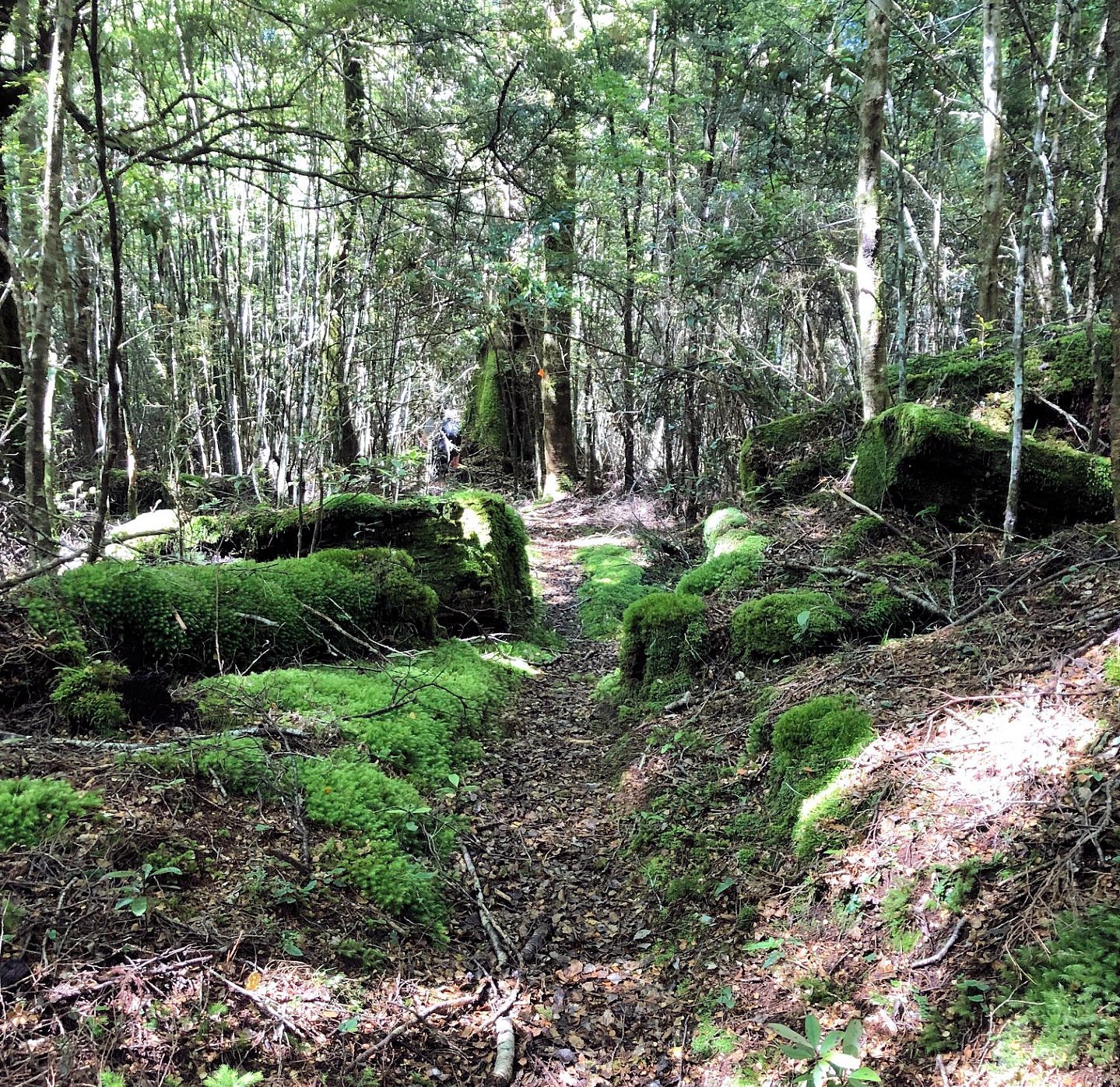Devastation gives way to serene, green forest walk
Towering native trees were impervious to Cyclone Gabrielle.
What a Goldilocks’ day. Not too hot and not too cold, just perfect for our walk in the Kaimanawa Forest.
The drive into the Ngapuketurua Track was an experience in itself.
Cyclone Gabrielle decimated the pine forest that once bordered the road, and the surrounding land was dusty and seemed barren.
We bobbed and bounced our way along the 20km of gravel road. A route which was showing signs of wear and tear from the convoy of logging trucks that removed salvageable wood from the area.
The serene, green beech forest that greeted us was such a contrast.
We took the right fork in the track to Ngapuketurua and were soon on a climb.
Much of this route is uphill and the flat sections are to be savoured.
The track is clearly marked with orange triangles but careful footing over the rooted ground was necessary.
Windfall, some small branches but other larger bushes or trunks, were either skirted around, clambered over or ducked under.
There were two beautiful clearings with mossy logs to sit on and pīwakawa flitting overhead.
While walking we heard the harsh call of a kākā, the thump, thump of kereru in flight, and what sounded like the chatter of a kakariki or parakeet.
Tiny whiteheads or pōpokatea and miromiro added their song to the mix.
A toutouwai or robin stood fearlessly trackside with its head cocked inquisitively as we tried to photograph him.
Glimpses of colour in the leaf litter caught our attention. Red and purple pouch fungi, a blue-green potato earthball, and even a fungus with a greenish cap were all hidden there.
Later we discovered a delicate, brown-fanned fungi dangling from dead wood.
The light filtering through the trees highlighted the intricate work of spiders. Large horizontal webs, with no sign of their secretive managers.
The undergrowth in this forest was sparse. High in the canopy we did see magnificent specimens of aged rimu, matai, maire and kamahi, but lower down only a few juvenile rimu and horoeka or lancewood.
There were groves of tree ferns, crown ferns and fan-shaped umbrella ferns but what flourished in the forest undershrub was predominantly horopito.
This forest is known for its sika and red deer population and although browsing deer eat most plants they avoid eating horopito’s peppery leaves.
The forest on this track is enclosing and there is little to see of the surrounding country.
Moss carpets the ground but there is little undergrowth thanks to browsing deer.
However, we did get a peek, through a small break in the trees, of the top of Ngapuketurua and across the top of a pine forest to Lake Taupō.
After some hours of walking, we retraced our steps to the intersection with the Loop Track and completed the section we had missed earlier.
The Loop Track is a lovely, easy track with several bridged gullies, many tall native trees and was a great way to finish our day.
Next week we are planning another bush walk.
To join us or for more information please email walkersmondaytaupo@gmail.com or follow us on Facebook at Taupo Monday Walkers.

